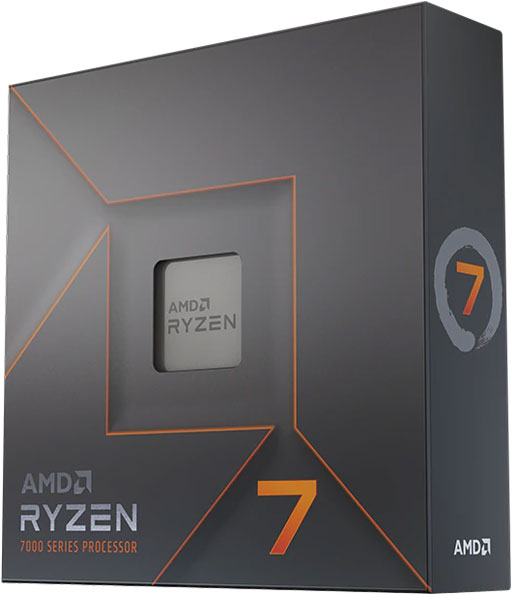We are approaching a major technological pivot where much of the processing we do personally happens not on our local PC but in the connected cloud.
At the forefront of this charge is Qualcomm, which uses Arm technology to complete its PC solution. Microsoft has followed Apple toward Arm, but unlike Apple, it partnered with Qualcomm to get there. To chase this opportunity, Qualcomm also bought Nuvia, which, on paper, has better technology than Apple’s.
In response to this acquisition, Arm pulled Nuvia’s license to prevent the advancement, apparently forgetting that Qualcomm’s license already covered a similar effort. Given history, there is a decent chance that Apple is at least partially behind this and is working to prevent the creation of a better solution than its own, coupled with a premature move by Arm to increase profits from PC-targeted Arm solutions.
Let’s explore this litigation mess, and we’ll close with my product of the week, which is AMD’s latest Ryzen 7000 series processor.
The Coming PC Pivot
The PC market is moving from a heavy focus on localized performance to connectivity to cloud services and battery life.
On my last couple of trips, I’ve noticed that airplane Wi-Fi, which until now barely worked for web browsing and email, now works for streaming. It’s still not fast enough to stream games, but the jump in performance is notable. This was an area that significantly lagged home use, and especially remote 5G performance, and prevented this pivot.
It’s increasingly likely that this limiting factor will evaporate as we move to 6G in the second half of the decade, making connectivity and battery life much more compelling. Assuming Qualcomm and Microsoft’s effort continues to be successful, this would favor that solution over others.
Intel has already begun to shift its roadmap to this opportunity, and it looks like it will be ready for the pivot. Intel’s solution, which promises a hybrid approach with both the performance you need when you need it and the battery life and connectivity you want in a bi-model solution, should provide a decent defense of its dominant PC market share.
AMD and Nvidia’s response to this trend is less defined, particularly since Nvidia’s attempt to buy Arm fell through. But I expect both companies also see this opportunity and risk and are moving to address it.
Bad Timing
This means that if Qualcomm doesn’t execute sharply, its advantage could evaporate due to an inability to perform and a successful pivot by the existing entrenched vendors. What Arm should be doing is throwing all of its support behind Qualcomm’s anything-but-certain gambit to assure better an Arm-focused outcome instead of trying to cripple the effort before it can get to critical mass.
On the economic side, while I understand the desire to get a higher license fee for a part that will likely have a higher gross margin, creating a market pivot comes with high costs. Anticipated extra gross margin would be consumed by marketing efforts and sales discounts designed to drive this Arm-favored pivot.
Put differently, the time to negotiate a new pricing deal is after the effort is successful and Qualcomm has the extra income to make such an increase work — not when the company is trying to penetrate a hostile market and needs every financial resource it can get.
In short, Arm acts as if Qualcomm is taking unfair advantage of Arm’s favorable pricing, which might be sustainable if Qualcomm had already been successful. Even so, Qualcomm’s existing license agreement would still have to be overcome, but at least the numbers would work in its favor.
Anti-Competitive
Apple undoubtedly has a great deal of say at Arm since it has licensing terms that may be more favorable than Qualcomm’s. This last would likely be a closely held secret but consistent with deals I’ve seen with other Apple suppliers. Apple is known for getting deals that are so good its suppliers often wonder if they would have been better off passing on them.
As I see it, Apple really doesn’t want an Arm solution, particularly one blessed by Microsoft, to be better than what it’s using. The Qualcomm solution using Nuvia’s technology looks to be substantially better. Apple already conceals higher margins that result from using cheaper technology in its premium lines — like avoiding touch screens that are common in competing PC products.
Having a significant performance disadvantage coupled with a lack of compelling cloud performance solutions would cost Apple a lot of its less religious base, particularly creators.
Moving again to cripple Qualcomm so that its better solution doesn’t come to market would be consistent with what Apple attempted in prior efforts, which included a backed hostile takeover by Broadcom and a bogus complaint with the FTC.
RISC-V Benefit
What really makes this interesting is that, before this happened, there was an anti-Arm effort coming from the RISC-V consortium. RISC-V has similar capabilities to Arm but a much more modern and licensee-friendly business model.
This model had already shifted a lot of developers from Arm to RISC-V, so this ill-advised hostile action between Arm and one of its largest licensees has put a spotlight on RISC-V’s better (in terms of licensee benefits) business model.
Thanks to Nvidia’s failure to acquire Arm and the resulting IPO that funded Arm independence but didn’t adequately fund development, Arm’s future revenues could be at risk, which would impact its ability to do the debt financing it will need to advance its technology.
In the end, Qualcomm and Microsoft should be looking more favorably at RISC-V over Arm due to this ill-timed and poorly considered legal action.
Wrapping Up
It is often the case that when companies are struggling, they turn to litigation to make up for their operational problems. This rarely works because CEOs generally don’t understand how litigation actually works, and, as a result, they put more faith in this approach than history justifies.
Arm is in trouble primarily because it depended on Nvidia acquiring it to fund its future growth and success, and now it’s hungry for revenue. But a licensing model (both Arm and Qualcomm are licensing experts) requires trust between the parties and a deep understanding of the bigger picture so that the end result is successful and profitable for both entities.
Crippling Qualcomm at the front of a massive war against x86 is ill-advised, given Qualcomm’s success was never assured and that Intel, in particular, seems to be successfully pivoting to address this threat to its market share.
To be successful, Qualcomm needs Arm’s help. Instead, Arm is hurting the effort to a degree that could cause it to fail. The obvious move for both Qualcomm and its Microsoft partner is to move to RISC-V, thereby putting this entire issue in the rearview mirror.
Such a move would either kill Arm or, more likely, turn it into what would effectively be a poorly funded Apple subsidiary. That end would make Apple less competitive over time, as well.
I think we are beginning to see the end of Arm, and while Arm is likely to hold others responsible, it will only have itself to blame.

AMD Ryzen 7000 Series Processor
For most of its life, AMD has been subordinated to Intel. That’s how the PC market was conceived: Intel needed a second x86 vendor to meet IBM’s requirement that the part not be sole-sourced.
The relationship between Intel and AMD was anything but friendly because AMD didn’t like being subordinate to Intel and wanted more market share than Intel would allow. To be fair, Intel was still doing most of the heavy lifting in terms of market creation and maintenance, so it felt taken advantage of.
Last decade, Intel tried to treat x86 as a cash cow and cut back significantly on development and ecosystem maintenance, which allowed AMD first to catch up in terms of performance and then bypass Intel by a significant margin on servers, workstations, and PCs.
Intel maintained leadership in terms of the installed base, compliance, and overall resources, but AMD took the performance crown. Intel is attempting to catch up and is, as noted above, pivoting aggressively to address the battery life and connectivity threat that Qualcomm represents.
But when it comes to PCs, AMD’s Ryzen 7000 owns the performance crown at the moment. Though be aware that performance is relative, and Intel’s 13th-generation parts look more competitive.
 Image Credit: AMD
Image Credit: AMD
I’ve assembled my first Ryzen 7000 desktop system, and one of the huge benefits is that, as Intel did a few years back, AMD has gotten rid of the pins on the chip, which pretty much eliminates where many of us broke ours (breaking a pin on assembly was almost a given). In addition, you no longer have to change the backing plate when adding a heavy air or water cooler.
All of this makes building a system faster and easier than before. So, more power, easier assembly, and a nice result make the new Ryzen 7000 processor line my product of the week.
























































